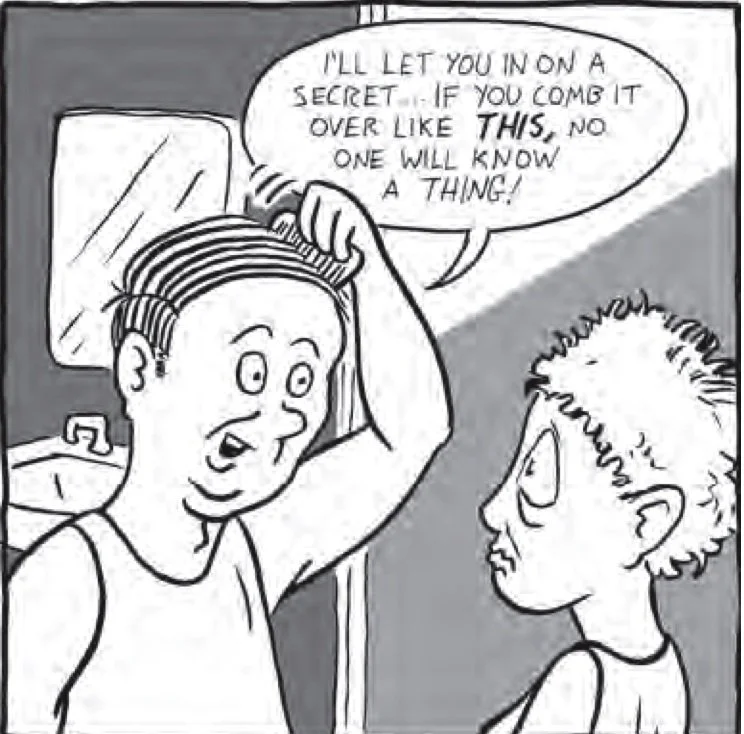hair loss and thinning
When your granddaughter reaches for your face and then says,“Hi Grandpa!”, you might start to consider buying a wig or tweezers or BOTH! Hair change during menopause is one of the most common symptoms yet not as frequently discussed. While it may feel embarrassing to see a bald spot or a sprouting mustache know that millions of women are going through this change with you.
Head, body or pubic hair may be disappearing while fine hairs may start to appear on your upper lip, chin or neck. Changing estrogen and androgen levels during menopause are to blame for the fuzzy situation. Aging, genetics and stress may also be contributing factors to thinning hair.
There are multiple options for dealing with hair change during menopause. Hormone Replacement Therapy (HRT) can help to manage symptoms such as these. Hair transplants are also available though may be costly. A change is lifestyle may be the easiest and most affordable option. This would look like adjusting diet, taking extra vitamins, getting sufficient exercise and using herbal remedies or topical solutions that would stimulate hair regrowth.
Ask a doctor to learn about what may be the best course of action for you.


